The ‘bridge people’ of Manila
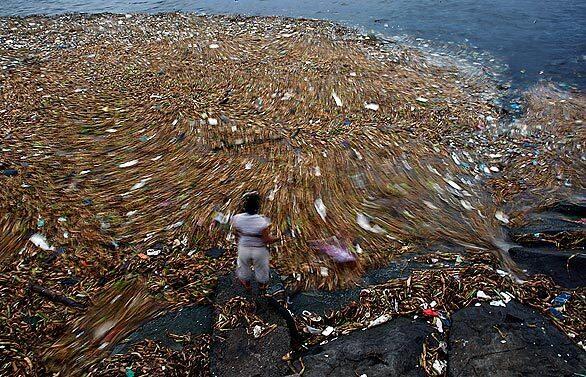
A woman scavenges for recyclable cans and plastic from an island of waste in Manila Bay, deposited by the flow of several rivers. Thousands of impoverished Filipinos eke out a living in the low-lying delta areas of Manila Bay in one of the world’s most congested and polluted urban areas. (Luis Sinco / Los Angeles Times)
In the Philippines’ capital, demolition crews are scheduled to dismantle makeshift community under bridges across the city, to help clean the Malabon River and move residents to proper housing. But none of the families want to go.
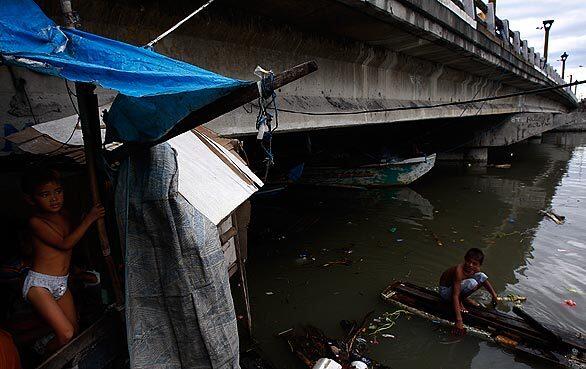
Thousands of homeless Filipinos live in shacks made of salvaged materials beneath the bridges that span the Malabon and Pasig rivers as they flow through metropolitan Manila. The city development authority has undertaken a program to evict so-called “bridge people,” commonly the poorest citizens of an impoverished nation where a large percentage of the populace lives on less than $2 a day. (Luis Sinco / Los Angeles Times)
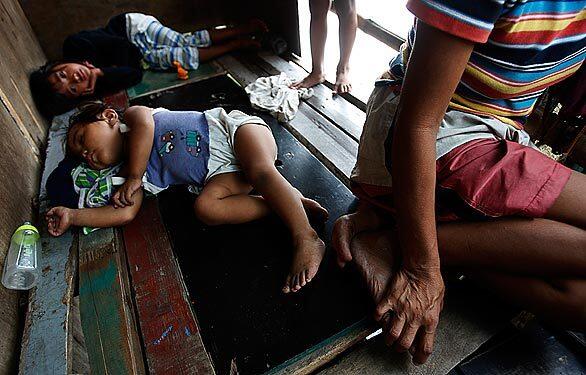
Evelyn Recto and her sick children shelter in a hovel beneath the so-called C-4 Bridge, which spans the Malabon River in Malabon. Most “bridge people” are too poor to afford medicines, even though they suffer chronic ill-health from living so close to the dangerously polluted waterways. (Luis Sinco / Los Angeles Times)
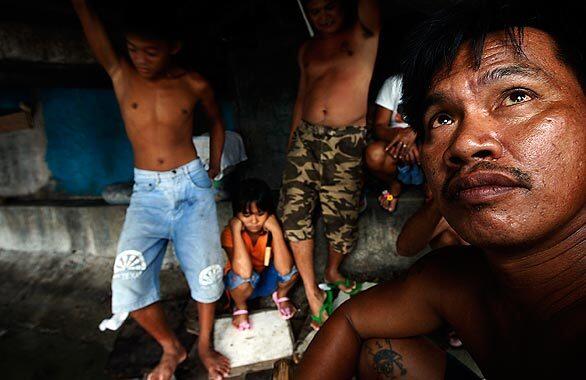
Rudy Valenzona, 38, huddles with family and friends beneath the C-4 Bridge, which spans the Malabon River in Malabon, Philippines. A recent Manila Metropolitan Development Authority report estimated that one in three Manila residents are squatters at least 540,000 families. About 70,000 families live along creeks and rivers, blocking water flow with their refuse, the report says. (Luis Sinco / Los Angeles Times)
Advertisement
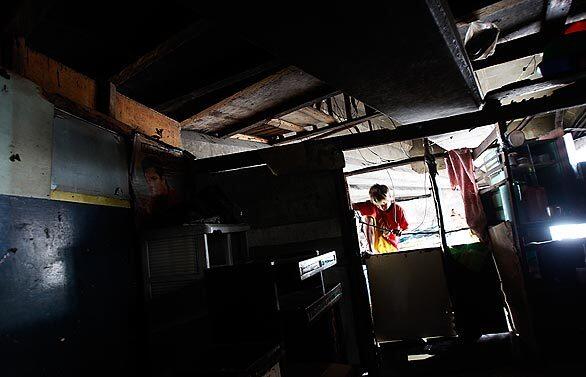
A child clambers into a shack built inches above the fetid Malabon River in Malabon. Thousands of impoverished people have long built their homes beneath the numerous bridges and for years officials have waged periodic efforts to clear the bridges. But the spans always fill with new residents. (Luis Sinco / Los Angeles Times)
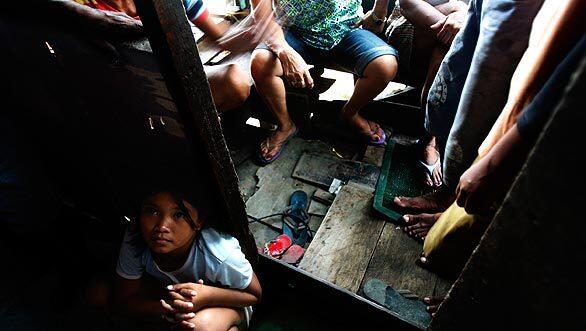
A family gathers in a shack beneath the C-4 Bridge, which spans the Malabon River. A city official said displaced families would be moved for free to a vacant plot of land elsewhere in the city, albeit without housing, running water or services. There, they will be allowed to build their homes. (Luis Sinco / Los Angeles Times)
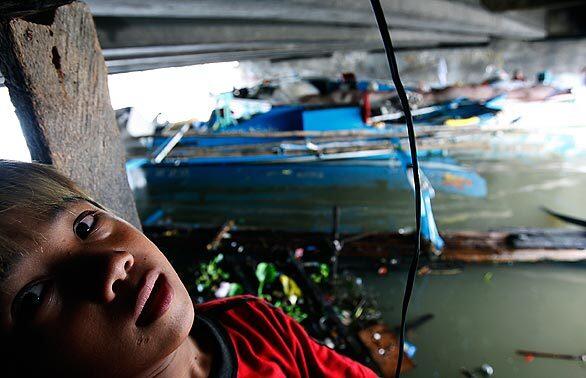
A young boy lives in a shack beneath the C-4 Bridge, over the Malabon River. Many impoverished families come to Manila from the countryside to encounter a city teeming with people but bereft of opportunity. (Luis Sinco / Los Angeles Times)
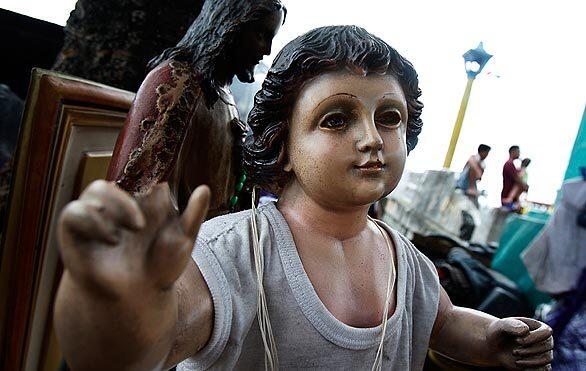
Religious icons are clustered along the banks of the Malabon River as so-called “bridge people” dismantle their hovels. Its grim work, uprooting these lives, said one city official, who will move hundreds of families from three bridges. (Luis Sinco / Los Angeles Times)
Advertisement
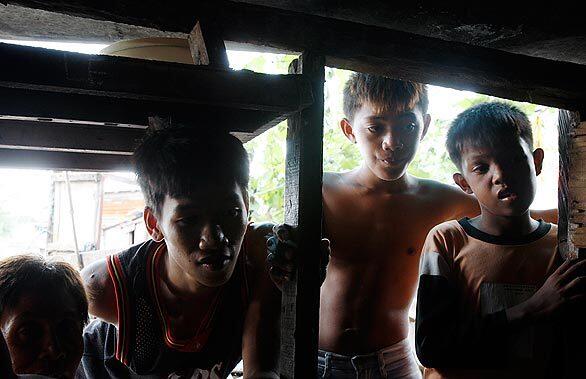
A family gathers in a makeshift shack beneath the C-4 Bridge, on the Malabon River. In this harsh lifestyle, residents say, water is the enemy and it attacks from both above and below. Rain pounds down from the sky, and sometimes, when typhoons hit, the swollen river rises to flood their rickety wooden huts, which are moored a few feet above the river water and stuck to the side of the bridges concrete like barnacles. (Luis Sinco / Los Angeles Times)
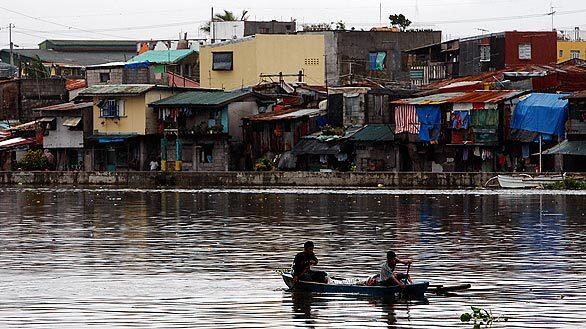
A pair of boatmen navigate the shallow and fetid waters of the Malabon River in metropolitan Manila, where sprawling shantytowns line the concrete banks. Some of the slum-dwellers make $2 a day lugging huge chests of frozen fish at a local market. The women and children spend their days on the rivers edge, fishing for plastic bags and recyclables. (Luis Sinco / Los Angeles Times)



